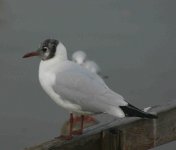Came across a lot of seagulls near the sea in Tel Aviv and only one had a black face.
http://albums.photo.epson.com/j/ViewPhoto?u=1717288&a=30967519&p=65964719&f=0
Is it still the same family or another type which got lost in a recent storm. Every year the storm drives them onto the river but the sea is very close. Hope I am not wasting someone's time to let me know. Thanks in advance. Fredy Ross
http://albums.photo.epson.com/j/ViewPhoto?u=1717288&a=30967519&p=65964719&f=0
Is it still the same family or another type which got lost in a recent storm. Every year the storm drives them onto the river but the sea is very close. Hope I am not wasting someone's time to let me know. Thanks in advance. Fredy Ross






